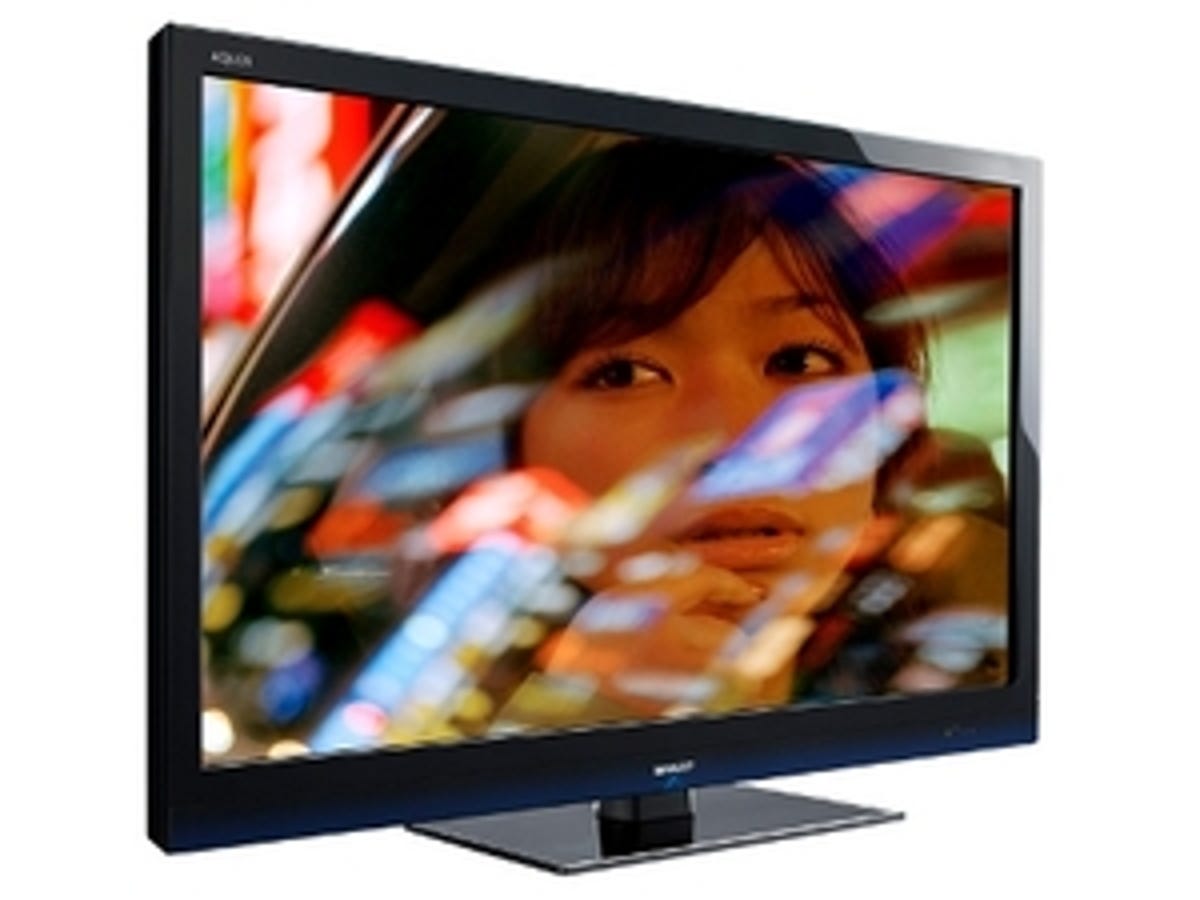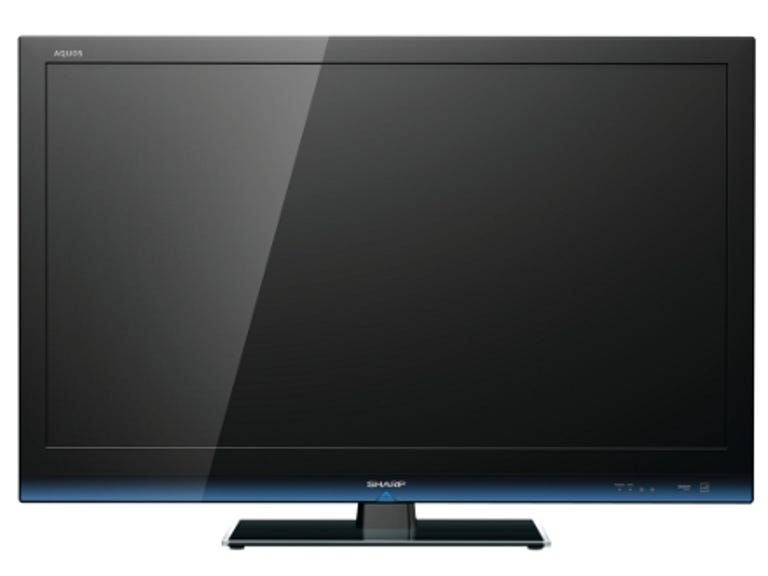 Why You Can Trust CNET
Why You Can Trust CNET Sharp Aquos LE700 (LC46LE700E) review: Sharp Aquos LE700 (LC46LE700E)
The 46-inch, 1080p, LED-backlit Aquos LC46LE700E LCD TV offers plenty of features for the price and is capable of delivering some spectacular images. Its motion-handling capability could be better, but its black-level response is frequently excellent and its colours are exceptionally vivid
We recently checked out the Sharp Aquos LC40LE600E, the first of Sharp's new LED-backlit LCD TVs. For the most part, we liked what we saw, especially considering how affordable it is for a TV of its ilk. Our only major concern was the set's tendency to blur when showing movement. That flaw led us to look forward to Sharp's LE700 range, which sports 100Hz processing. Now we've got our hands on a model from that range, the £1,200, 46-inch, 1080p Aquos LC46LE700E LCD TV.
The Good
The Bad
The Bottom Line
Blander chassis
Although its 100Hz processing and reasonably appealing price tag had us hoping for the best from the LC46LE700E, we found its design slightly disappointing. Oddly, the rather fetching, silver, metallic strip along the bottom of the cheaper LE600 range has gone, and is replaced by what seems to us a blander black finish, with an infusion of blue at its lower extremity.
The LC46LE700E's step-up nature starts to materialise with its connections, though. It has four HDMI ports to the LC40LE600E's three, and the USB port on the LC46LE700E's side can play JPEGs and MP3s, rather than just existing for service use, as is the case with the LC40LE600E's. There's still no Ethernet port, with which you might directly access files on a PC or some sort of online service.
LED delights
The LC46LE700E's LED backlight consists of an array of individually controllable, white-dimming LED clusters positioned directly behind the screen. The use of white-dimming LED clusters, rather than the RGB-dimming ones found on Sharp's flagship XS1 LED-backlit TVs, is, to some extent, a cost-cutting measure. But, given that the XS1s start at about £9,000 and the white-dimming LEDs arguably produce a colour range more in tune with today's video standards, we suspect it's a cost-cutting measure few people will have a problem with.

The LC46LE700E's all-important 100Hz engine is tucked away deep within a set of clean, if slightly tortuous, on-screen menus. There's an impressive degree of set-up flexibility, including a colour-management system that enables you to fine-tune the hue, saturation and 'value' of the red, yellow, green, cyan, blue and magenta colour elements.
You can also turn the set's 'active contrast' mode off, tweak the picture's gamma level, and adjust a provided noise-reduction system between no less than five different processing levels.
Slightly improved pictures
But does the addition of 100Hz processing help the LC46LE700E produce better pictures than the LC40LE600E? The simple answer is 'yes'. But the level of improvement isn't as great as we'd hoped.
While motion, at least when viewing standard-definition material, definitely looks slightly more fluid and clean than it does on the LC40LE600E, there's still more blur than we'd like, especially if you're watching an action film or a sporting event.
Oddly, the 100Hz mode is blanked out, and thus unavailable, when watching 1080p/24p Blu-ray feeds in the TV's 'movie' mode, so it wasn't too surprising to find ourselves struggling to detect any improvement at all in the LC46LE700E's hi-def motion-handling capability. If you want the 100Hz processing to engage, you'll have to set your Blu-ray player to output a different format, such as 1080p/60p.
It's important not to forget about all the other strengths of Sharp's new LED engine, such as a frequently excellent black-level response, exceptionally vivid colours, and good HD sharpness when images are relatively static. These are enough in themselves to ensure that the LC46LE700E is never less than a good TV. But the fact the TV has these strengths doesn't invalidate our disappointment that the 100Hz processing doesn't bring more to the party.
We also have to take serious issue with the LC46LE700E's picture presets, which, for the most part, are almost spectacularly bad, requiring extensive manipulation of everything from colour, contrast, backlight-level, noise-reduction and motion-processing settings before you get a picture that's anywhere near the best this TV is actually capable of.
One final disappointment is provided by the LC46LE700E's audio. It fails to produce levels of volume, bass and dynamism that do justice to the size and vibrancy of its images. If you end up going for this TV, you'll probably also want to factor in the cost of a separate audio system.
Conclusion
In many ways, the Sharp Aquos LC46LE700E is another fine example of the advantages LED backlighting can bring to LCD TV technology, with pictures that are occasionally downright spectacular. But, even with its 100Hz processing, the LC46LE700E isn't immune to quite noticeable motion blur, preventing us from being able to give it the unbridled recommendation we hoped we'd be able to.
Edited by Charles Kloet
